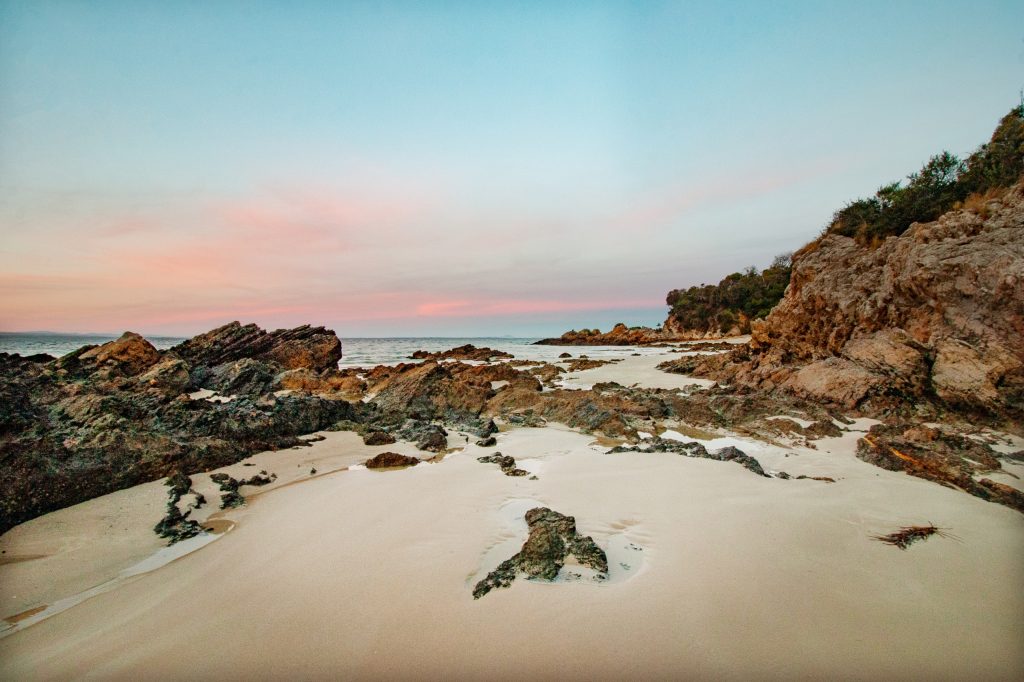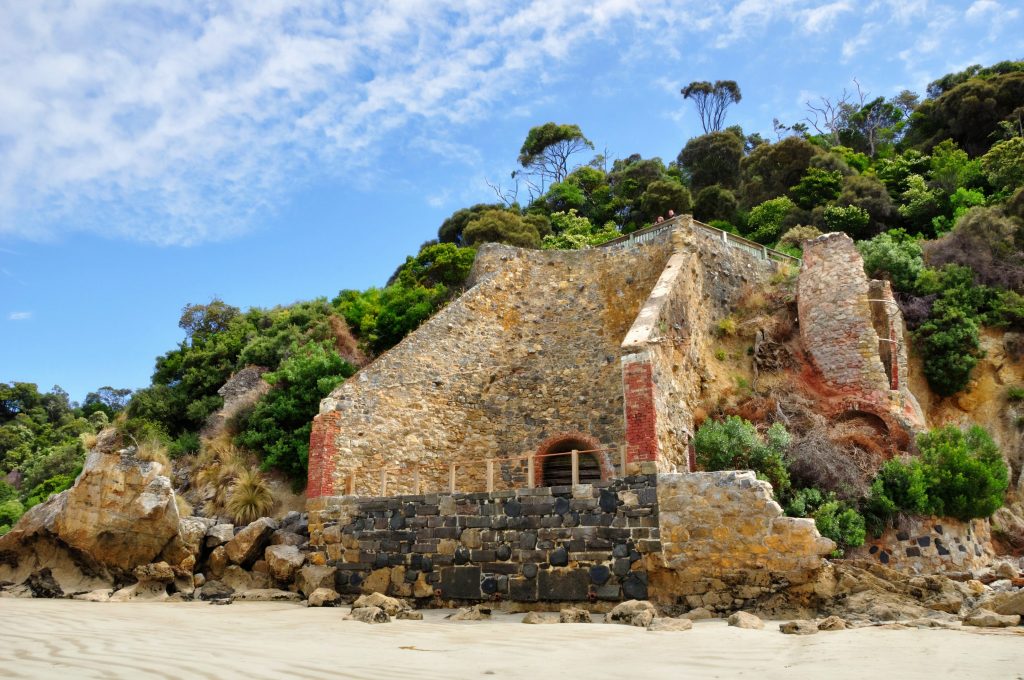Two settlements with one thing in common, their pristine beach beauty.
Extremely secluded, Walkerville South is only accessible by lonely gravel roads and the lack of people ensures that facilities are at a bare minimum.
Walkerville North is accessed by a sealed winding road from the nearby hilltop through beautiful forest down to the shore. Once the road clears the forest at the shore, a gravel road on the immediate left leads to a camping ground, while the sealed road hugs the shore closely for about 500 metres before ending at a boat ramp, providing access to the shores of Waratah Bay. Along this road there are few houses, along with a picnic area and public toilets.
Walkerville North provides beautiful views across Waratah Bay to nearby Wilsons Promontory, and at low tide, provides access to spectacular rock pools.
Approximately 100 metres beyond the end of the boat ramp marks the beginning of a walking trail up the cliff that separates the two Walkerville settlements. This trail leads you through spectacular forests and little creeks stained brown by the tea tree (melaleuca) plants. Along the trail are vantage points with information plaques about the brief mining and logging history of the settlement, and geographical information about the area. A short side-trail takes you to a hidden cemetery, with beautiful headstones of the settlers and workers that battled the tough terrain that is visibly different to that of today.
The gravel road that leads to Walkerville South ends with a similar boat ramp to that of its northern sister settlement, and a sheltered bay frequented in the summer by families swimming, fishing and jet-skiing in the quiet pristine waters.
The small town is now best known for its camping ground ‘Walkerville North Foreshore Reserve’, which consists of a one kilometre stretch of dirt road along the rocky beach with camping sites on either side. The camping ground is at its busiest during the New Year and Easter holidays, attracting many campers.
Things to see and do
Walkerville is located approximately two and half hours’ drive from Melbourne, and can be accessed via Tarwin Lower or Fish Creek.

Walkerville is relatively close to several other townships.

